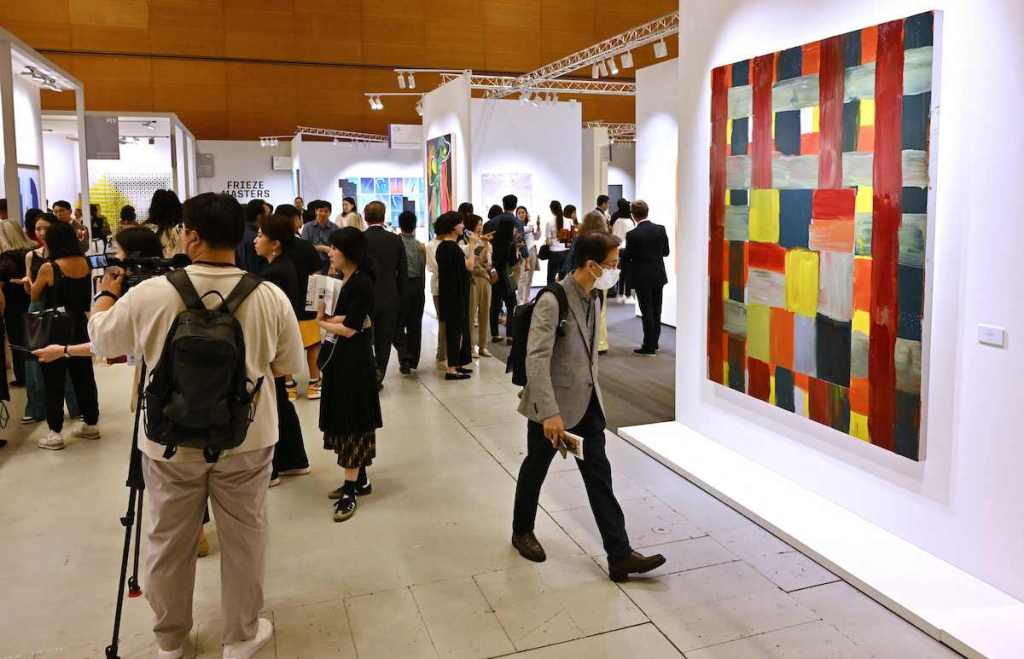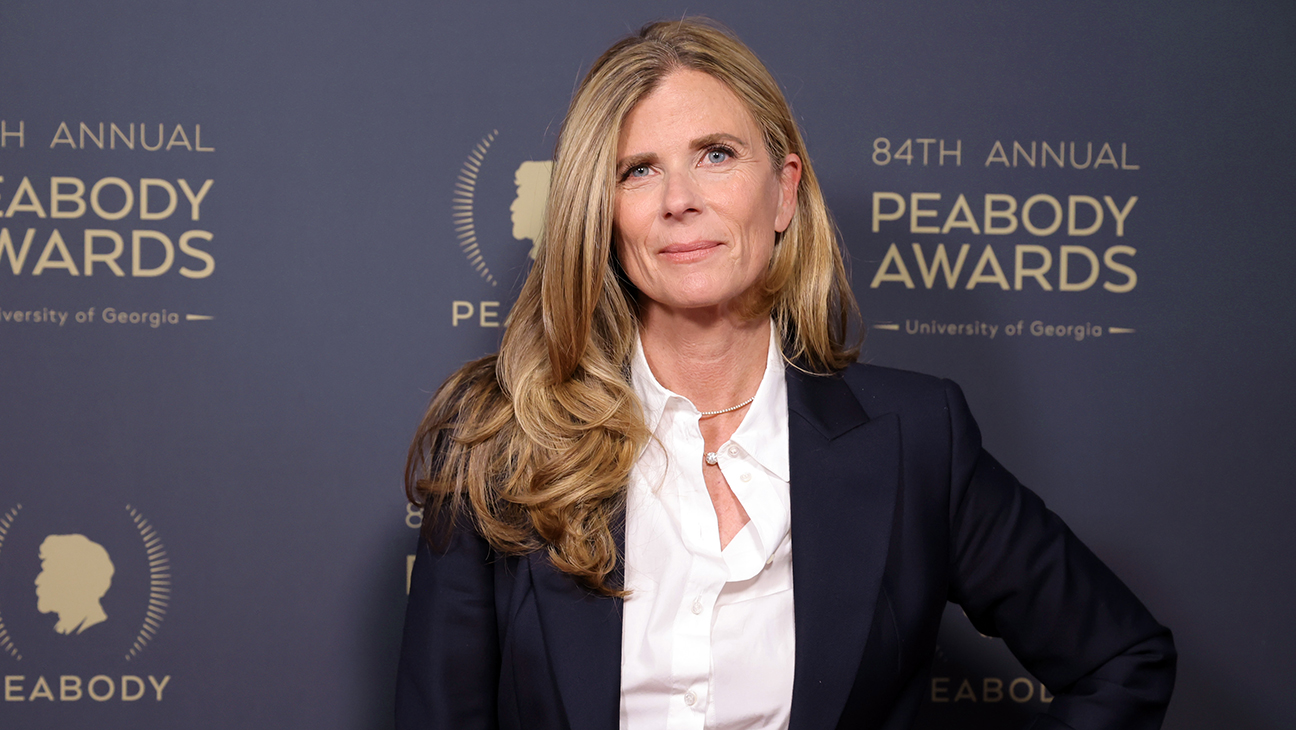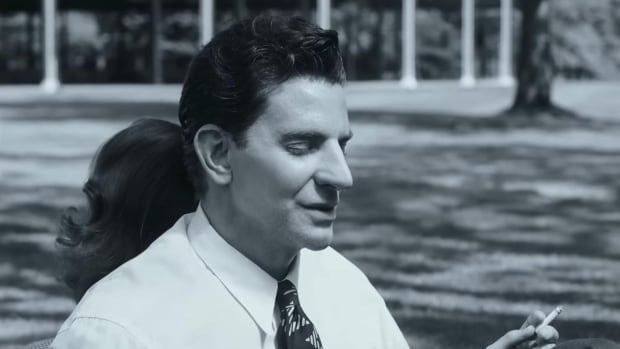Frieze Seoul has returned to the capital of South Korea after its debut last year, opening its VIP preview on September 6. To continue the hype of the last year on an even bigger scale, many of the museums, galleries, and smaller independent spaces all geared up for receiving a growing audience for art in the country. This year, the fair also coincides with the inaugural Seoul Art Week, whose schedule is full of exhibitions, and also comes with four organized nights of talks and events taking place in neighborhoods throughout the city.
Of more than 100 galleries from around the world participating in Frieze, which is once again taking over the Coex Convention & Exhibition Center, roughly one-fifth of them are Korean. As a whole, this Frieze has the usual names that are familiar at any global art fair, but there are more Japanese galleries than there were last year. (Perhaps this Frieze list reflects some of the energy felt at the Tokyo Gendai fair, whose debut happened just two months ago.)
Frieze Seoul is not the only fair taking place right now in the Coex center. It coincides with Kiaf (Korea International Art Fair), which can be found on a different floor. That fair includes 200 galleries, 60 percent of which are Korean.
Compared to last year, this Frieze Seoul is a more composed affair. While there are many newcomers in Seoul, the galleries now don’t seem as caught up in the excitement of the first moment. Here are some of the standout galleries and projects at this year’s Frieze Seoul.
-
Pace Gallery
Image Credit: Jaeyong Park for ARTnews Having this week announced its expansion to Tokyo, Pace put on view is the 1997 work ON THE LINE OFF THE LINE, whose estate the gallery recently began representing in Asia. The striking text piece is complemented by another work at the gallery’s Seoul location, where another Weiner work occupies one side of the building’s exterior wall, and by other pieces currently on view in the artist’s survey exhibition at the Amorepacific Museum of Art, where some of his works have even been translated into Korean. That show opened on August 31, just a week before the fair’s opening.
-
SCAI The Bathhouse

Image Credit: Jaeyong Park for ARTnews Tokyo’s SCAI The Bathhouse, now celebrating its 30th anniversary this year, is making its debut in Seoul after many appearances in other international art fairs. The booth is a room full of video installations by the Korean duo Moon Kyungwon and Jeon Joonho. Expanding the artists’ works that have been presented at major museum exhibitions, the installations dynamically play off other works on display at the booth, particularly Tatsuo Miyajima’s installation and painting composed of blinking numbers and numerical dots.
-
The Modern Institute

Image Credit: Jaeyong Park for ARTnews Of few galleries that have decided not to fill up their booths to the brim, Glasgow’s The Modern Institute did it best. The booth’s main space has one long wooden bench in its middle; one can sit on it, lean back, and take in a row of American painter Walter Price’s small works. Uniformly sized around 6 by 8 inches, these panels display Price’s ability to produce images that exist in that unspecified space between figuration and abstraction. It’s the perfect pitstop for the visitors in need of a pause between the two great exhibition halls of the Coex center.
-
Getty PST ART with ikkibawiKrrr

Image Credit: Jaeyong Park for ARTnews While it’s not entirely uncommon for enterprises that aren’t galleries to show at fairs, there are certainly more of these participants than there were last year at Frieze Seoul. ikkibawiKrrr, a Korea-based research band who figured in last year’s Documenta, is showing a new version of Seaweed Story (2002), a video and installation about haenyeo, or “sea women” who harvest marine plants. Supported by the Getty Foundation’s Pacific Standard Time initiative, whose science-themed 2024 edition will see the band show at Los Angeles’s Hammer Museum, ikkibawiKrrr’s presentation also has another component. Once a day throughout the fair, the collective is staging the interactive performance Flavors of the Sea (2023). Details weren’t announced in advance, but if it’s anything like what the band is showing already, it will bring waves of people to the booth.
-
ROH and Whistle

Image Credit: Photo Rohspace/Courtesy ROH and Whistle Thanks to Frieze Seoul, Asian galleries, who had to rely on fairs like Frieze London to link up, can now collaborate in the South Korean capital. Since the first Frieze Seoul, Jakarta’s ROH and Seoul’s Whistle have been working together, sending artists to each other’s locations and joining forces for projects. As a result, the two galleries are co-hosting a mix of Korean and Indonesian artists in their booth. Korean sculptor Hyun Nahm’s Extructed Mountain (Single Peak) (2020), for example, reminds one of the artist’s visit to the volcanic region of Indonesia, while Indonesian artist Agus Suwage’s Teach Your Children (2016), featuring a dog-headed human standing above a group of beagles at its feet, is a comment on both countries’ sociopolitical climates.
-
Cylinder

Image Credit: Jaeyong Park for ARTnews The Focus Asia section features 10 Asia-based galleries established in the last 12 years, one of which is Cylinder. Established in 2020 in Seoul’s Bongcheon-dong district—not exactly the usual neighborhood for an art space for its kind—Cylinder is likely the youngest of these galleries. It was formed in 2020, and is one of many art spaces in Seoul run by a younger generation that is coming up after the rapid rise and fall of Sin-saeng-gong-gan (“new-born-spaces”) between 2014 and 2016. These new art spaces do not position themselves as anti-market. Rather, they position themselves as galleries and actively pursue commercial activities while also doing the kind of experimental work expected of an alternative space. At Frieze Seoul, Cylinder is showing work by Sinae Yoo, a Korean-born artist who lives between Bern, Switzerland, and Seoul, offering a taste of homegrown taste of Asian accelerationism at its finest.
-
Galerie Quynh

Image Credit: Jaeyong Park for ARTnews Established in 2003 in Ho Chi Minh City, Galerie Quynh has been promoting Vietnamese contemporary art for two decades. During this time, Vietnam became an economic powerhouse of the Southeast Asian region, thanks in part to its dynamic economic relationship with South Korea. The gallery’s first participation in Frieze Seoul brings two Vietnam-based painters, Do Thanh Lang and Will Thurman, to showcase the younger generation of the country’s art scene. Both were born in the late 1980s, and both portray the mixed feelings that come life living today in figurative paintings that hew into abstraction. Galerie Quynh has worked with Korean collectors previously, and its reach is only likely to grow in the future because of fairs like Frieze.
-
Gallery 1957

Image Credit: Jaeyong Park for ARTnews The Accra-based Gallery 1957 has as its stated mission the goal of bringing West African artists to the world, and here it’s making debut with a cohesive group presentation featuring works by Amoako Boafo, Gideon Appah, Kwesi Botchway, Joana Choumali, Tegene Kunbi, Kaloki Nyamai, and Nadia Waheed. Some of these artists, like Appah and Choumali, have had their works shown widely abroad, but rarely have they been seen in locales like the Korean capital. Of particular interest is Amoako Boafo’s White Overgrip (2023), showing a person playing tennis.
-
Kurimanzutto

Image Credit: Jaeyong Park for ARTnews Art fair booths serve different purposes that range, from immediate commercial gains to merely promoting artists and their practices. Kurimanzutto’s second Frieze Seoul booth fulfills both at the same time, bringing familiar names of the international art scene to the city in the hopes of making sales and expanding their followings. Gabriel Orozco’s delicate piece composed of tempera and gold leaf on canvas, Rirkrit Tiravanija’s piece crafted from gold leaf on newspaper on linen, Haegue Yang’s sculpture made of bells and hanji paper, and Adrián Villar Rojas’s 3D-printed organisms are among the works that can be seen here. Some of these artists have been exhibited at institutional exhibitions and biennials in Korea and the surrounding region, yet the fair should only serve to grow their fan bases here.
-
Gallery Hyundai

Image Credit: Courtesy Gallery Hyundai With the advent of Frieze Seoul, Korean galleries have come to face a difficult dilemma. Should they leave Kiaf, a fair with a much longer history in Seoul, and join Frieze? The questions has led major Korean galleries, such as Gallery Hyundai, to retrace their origins—and to look back to Korean modern art’s roots more generally. Gallery Hyundai’s presentation of Seundja Rhee (1918–2009) in the Frieze Masters section epitomizes this turn. Talented yet under-recognized compared to her male contemporaries, Rhee was a painter, engraver, and ceramicist. She belongs to a broader non-Western group of artists that moved to art capitals such as Paris and New York in the mid-20th century; some found success there, even if they did not gain a central place in the Western art world. Her cosmic abstractions grew from her acknowledgment of being a woman and embracing a balance of material and spirituality, drawing the East and the West together in harmony with her canvases.



